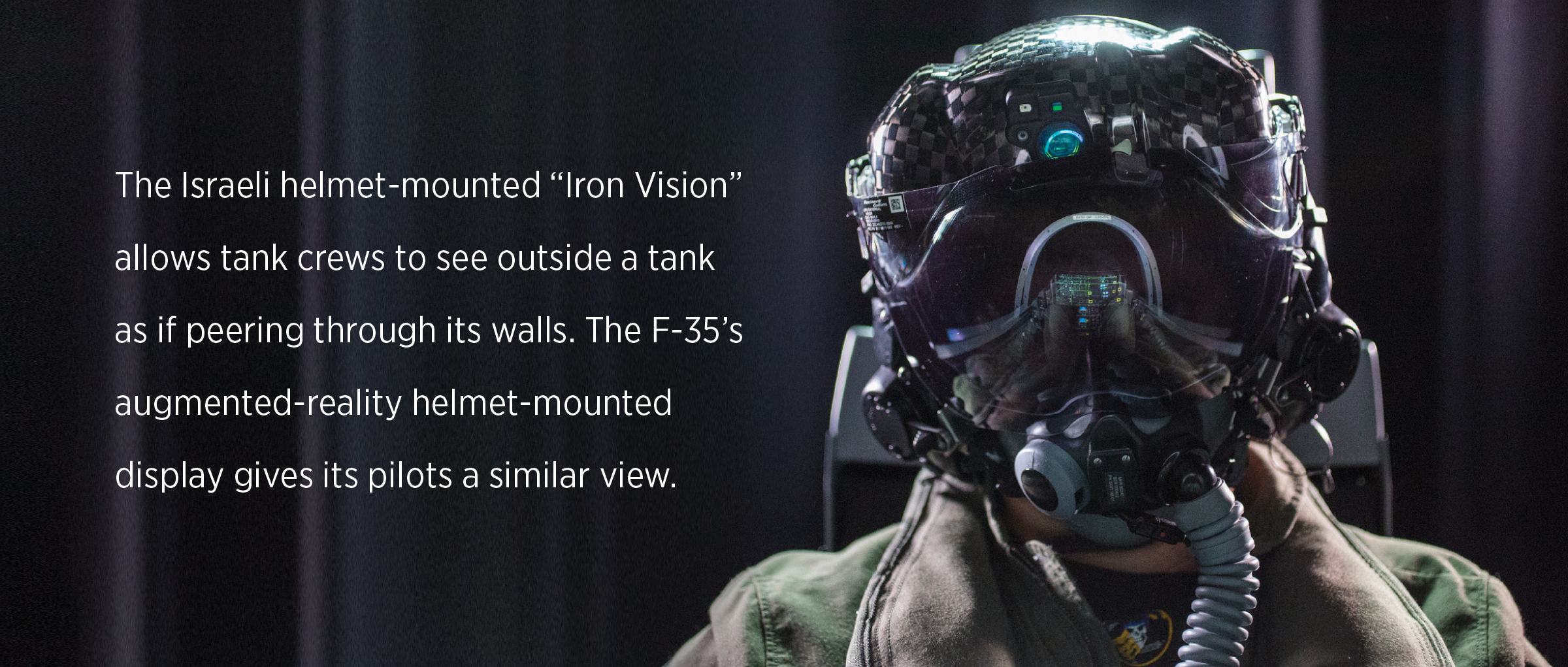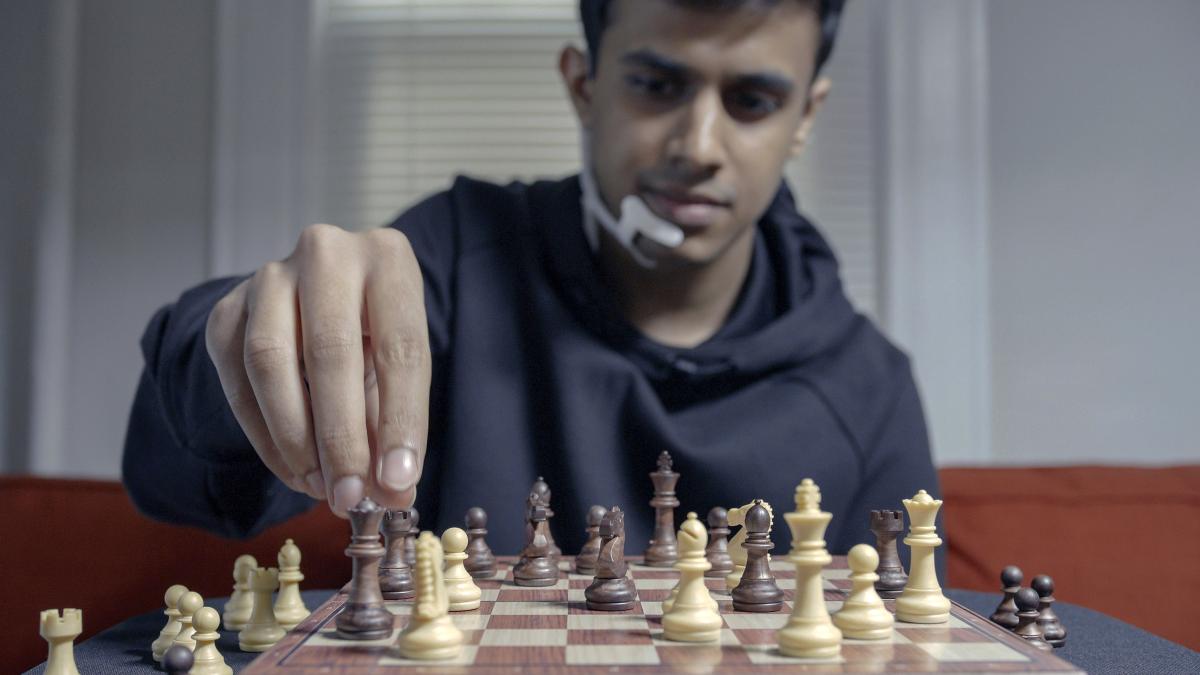Wearable devices have been around for quite some time, but recent advances in materials science and nanoelectronics, which underpin these technologies, have made them increasingly important to improving human performance.1 These innovations provide rich insights into key biomechanical and health variables; they also help monitor and enhance cognition.2 The use of wearables will only grow, as technology improves and form factors shrink.3 Wearables are part of the larger ecosystem of the Internet of Things (IoT)—“smart objects or smart things.”4 Combined with advanced data analytics and machine learning, wearables can help military leaders gather real-time feedback and nuanced understanding of how personnel are performing or responding to particular tasks. The U.S. military should pursue wearables to augment human cognition, improve health performance, and increase lethality to stay ahead of its adversaries.
Work Smarter—Augmented
The greatest military benefit likely will come from the interactions among IoT devices and wearables to produce smart environments that provide the foundation for “ambient intelligence” that will augment human cognition.5
In recent decades, neuro- and cognitive science have provided new insights into how humans make decisions—and exposed many flaws in human judgment.6 Requiring people to multitask exacerbates the flaws and increases the errors.7 Knowledge of these and other phenomena have led to important advances that overcome faults and improve decision-making.
Consider, for example, a 2012 air warfare command-and-control experiment involving radar-based risk assessment. It demonstrated that operators had failures of attention that led to them missing certain visual information. The result was cognitive overload, as operators tried to attend to multiple data sources simultaneously.8 The 2017 U.S. Navy destroyer collisions brought into sharp focus similar stressors placed on those ships’ crews.9
While teamwork and proper training can overcome many shortcomings in demanding environments, wearables might help more. At the cutting edge, devices such as multimodal neural interfaces use biometric and environmental sensors to enhance human cognition through brain stimulation.10 Elon Musk’s Neuralink has its sights set on merging the human brain with AI.11 Naval Special Warfare Command has experimented with transcranial electrical stimulation, aimed at achieving higher performance, and has achieved some positive results.12
As promising, IBM researchers have used sensors embedded in a t-shirt to predict cognitive states “at a degree of accuracy above chance.”13 Baseline physiological performance measurements were established to train the system, with users reporting their subjective mental states in a short test. Then the machine monitored users during an experiment to make predictions about cognitive states and events. Military leaders would benefit from this sort of “cognitive overwatch” to understand how their personnel are performing mentally. While much work is needed—exploring both the benefits and potential shortcomings—it is clear that the U.S. military should continue pursuing wearables that provide a cognitive edge to warfighters.
Fit to Fight
A healthy and fit force is more lethal. Yet, a RAND study released in 2018 on DoD health-related behaviors found unhealthy indicators such as poor sleep, excessive caffeine consumption, tobacco use, and obesity were common.14 The researchers recommended services establish population benchmarks for positive health behaviors.15 DoD could use wearable technology to identify those who need the most help in this area. In addition to boosting warfighter performance and resiliency, health-focused advances could improve healthcare delivery for those who are wounded or fall ill.
Fitness trackers such as FitBit and the Apple Watch are a good starting point, but the possibilities are much more extensive. Wearable health monitors and interventions are proliferating. For example, researchers at Northwestern University have developed a microfluidic device that adheres to the skin to analyze different chemical markers in sweat.16 Sensors for detecting the presence of drugs (including caffeine) also have been developed, and wearables (similar to the nicotine patch) can deliver drug therapies.17 Innovations in accelerometer technology and heart rate monitoring (e.g. Apple’s ECG-electrocardiogram) could provide both first responders and healthcare professionals robust sources of data for individual tracking, trend analysis, and crisis intervention. Someday, the military might be able to provide incentives to those whose devices show they eat healthier and exercise more effectively, lowering health-care costs while improving mission readiness.
Wearable Lethality
An assortment of wearable technologies have the potential to improve force lethality dramatically. For example, an Israeli helmet-mounted technology called “Iron Vision” allows tank crews to view the environment outside the tank as if they could peer through its walls.18 The F-35’s augmented-reality helmet-mounted display gives pilots a similar view. Comparable technology could give watchstanders on a ship’s bridge a 360-degree view of the ship’s surroundings, resulting in better situational awareness. Multispectral cameras and other combat information displayed through augmented reality are being combined to allow leaders to cut through the chaos of uncertainty in highly complex environments and be more lethal.
Wearables also can help mitigate one of the most common battlefield challenges from time immemorial: noise. From the din of rifles to the thump of mortars and artillery, the concussive effects of battle are continual.19 And sometimes silence is required. A device known as “AlterEgo” offers one solution.20 It reads electrical signals sent to the muscles in the jaw when you think words without speaking them, and it uses bone conduction to send sound to receptors in the ear without blocking the ear canal. This could provide clearer communications for troops in battle—or trying to approach a target without so much as a whisper.
Digital Twin
So far, each example has been a single technology used in isolation. Melding multiple technologies, however, could create a nonlinear advantage. Wearables could be used in combination to manage what is termed a “digital twin.” These are models of real-life things, high-end simulations or proxies for systems or devices that allow operators to study them and even predict failures.21 Some researchers see a future with a personal digital twin—maybe not the robotic clones of the movie Surrogates, but perhaps a digital copy as in the Netflix series Altered Carbon.22 Military personnel could have software versions of themselves continually updated and maintained.
Wearable computers could provide small-unit leaders access to the digital twins of their unit members in a distributed environment for better monitoring and support.23 Combined with a variety of health data, cognition tests, and exercise baselines, advanced analytics applied to a digital twin could offer novel approaches to improve training outcomes. The military is a team sport, and teams with the right individuals with complementary abilities likely will yield better outcomes than teams whose membership is left to chance. Therefore, having detailed virtual data could provide decision makers better insights on which combinations of personnel are more effective and most lethal for specific tasks.
Bridging the Gap
Wearable technologies could form a bridge between augmented (human) intelligence and (general) artificial intelligence. At scale, the challenges appear daunting, but DoD’s rich history of partnering with research centers, service laboratories, civilian universities, and its own homegrown innovation units offer hope that these proposals will be explored, understood, and fielded.
The key is to get as many of these technologies into the hands of as many different units as possible. “Centaur warfare”—a concept elaborated by former Deputy Secretary of Defense Robert Work—may emerge if enough opportunities occur.24 (The term comes from the chess world, in which a human grand master is paired with an AI player to form a chess “centaur,” an essentially unbeatable team, at least when facing either a human or an AI.) The Marine Corps’ Sea Dragon 2025 experiment has helped drive the development of new concepts around a variety of technologies by highlighting those that demonstrated the most promise.25 But the most valuable lesson learned in Sea Dragon was that “noncommissioned officers and company-level leaders were among the most important assets to leverage and invest in.”26 If that is true, then giving those personnel wearable technologies should bear significant fruit.
The Revolution Will Be Miniaturized
The future security environment will be anything but simple. DoD leaders must continue to push the boundaries of human augmentation to improve the military’s warfighting prowess. Sun Tzu wrote, “If you know the enemy and know yourself, you need not fear the result of a hundred battles.”27 Today, we have a wide variety of assets to help understand the enemy, but very few to help us truly understand ourselves. And the tsunami of data produced from almost ubiquitous sensors and other information streams likely will inundate every combat operations center and warrior on the battlefield. (See “Surf the Data Tsunami,” pp. 58–62, February 2018.)
With the introduction of information as the seventh warfighting function, understanding how information influences military personnel processes will be vital to how operations are planned and executed across the information domain. Wearables that equip the U.S. military not only to operate but also to thrive in this environment could be a key to success. As former chairman of the Joint Chiefs of Staff General Joseph Dunford said, “I don’t believe we should ever send Americans into a fair fight.” We owe it to our military personnel to provide them every unfair advantage to fight and win on the future battlefield.
1. Shourjya Sanyal, “How Are Wearables Changing Athlete Performance Monitoring?” Forbes.
2. Paul Smart, Aastha Madaan, and Wendy Hall, “Where the Smart Things Are: Social Machines and the Internet of Things,” Phenomenology and the Cognitive Sciences (2018), 2.
3. Courtney Howard, “Widespread Use of Wearable Technology,” Military & Aerospace Electronics.
4. Smart, Madaan, and Hall, “Where the Smart Things Are,” 2.
5. Smart, Madaan, and Hall.
6. Daniel Kahneman, Thinking Fast and Slow (New York: Farrar, Straus and Giroux, 2011).
7. Lobna Cherif, Valerie Wood, Alexandre Marois, Katherine Labonté, and François Vachon, “Multitasking in the Military: Cognitive Consequences and Potential Solutions,” Applied Cognitive Psychology 32: 429.
8. Cherif et al., “Multitasking in the Military,” 431.
9. T. Christian Miller, Megan Rose, and Robert Faturechi, “Fight the Ship: Death and Valor on a Warship Doomed by Its Own Navy,” Pro Publica.
10. William J. Tyler, “Multimodal Neural Interfaces for Augmenting Human Cognition,” International Conference on Augmented Cognition (Vancouver, BC, May 2017), 389–407.
11. Nick Statt, “Elon Musk Launches Neuralink, A Venture to Merge the Human Brain with AI,” The Verge.
12. Douglas Ernst, “Real-life Jason Bourne: SEALs Test ‘Cognitive Enhancement,’” The Washington Times, 3 April 2017.
13. Elizabeth Webster, Noi Sukaviriya, H-Y Chang, and James Kozloski, “Predicting Cognitive States from Wearable Recordings of Autonomic Function,” IBM Journal of Research and Development 61, no. 2/3 (2017): 2-1.
14. Sarah O. Meadows, Charles C. Engel, Rebecca L. Collins, et al. “2015 Department of Defense Health Related Behaviors Survey (HRBS),” Rand Health Quarterly 8, no. 2 (2018).
15. Meadows, et al., “2015 HRBS.”
16. Megan Fellman, “Researchers Develop Bio-integrated Lab for Sweat Analysis,” Northwestern Now.
17. Li-Chia Tai, Wei Gao, Minghan Chao, et al. “Methylxanthine Drug Monitoring with Wearable Sweat Sensors.” Advanced Materials 30, no. 23 (2018): 1; Suzanne Shelley, “Wearable Devices Are Changing the Paradigm in Drug Dispensing,” Pharmaceutical Commerce, 25 July 2018.
18. Barbara Opall-Rome, “Israel to Enter Era of Closed-hatch Combat, See-through Tanks,” Defense News, 6 July 2017.
19. Jonathan Crane, “Sound and Combat: Fighting and Winning in the Auditory Battlespace,” Modern War Institute.
20. Eric Mack, “You Can Talk to MIT’s Mind-Reading Headset Without Ever Opening Your Mouth,” Forbes, 6 April 2018.
21. Bernard Marr, “What Is Digital Twin Technology—And Why Is It So Important?” Forbes, 6 March 2018.
22. Robert Saracco, “Can We Have a Digital Twin?” IEEE Future Directions.
23. J. R. Wilson, “Military Wearable Computing Hits the Mainstream,” Military & Aerospace Electronics 29, no. 5 (May 2018).
24. Sydney J. Freedburg, “Centaur Army: Bob Work, Robotics & The Third Offset Strategy,” Breaking Defense, November 2015.
25. Megan Eckstein, “Marines to Field Small UAS, EW Tools, Upgraded Weapons after Sea Dragon 2025 Experimentation,” USNI News, 13 February 2018.
26. Eckstein, “Marines to Field Small UAS.”
27. Sun Tzu, The Art of War.





